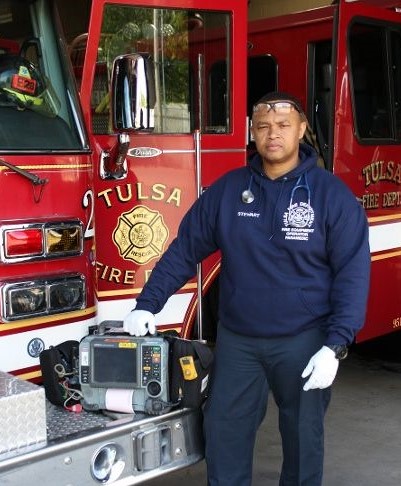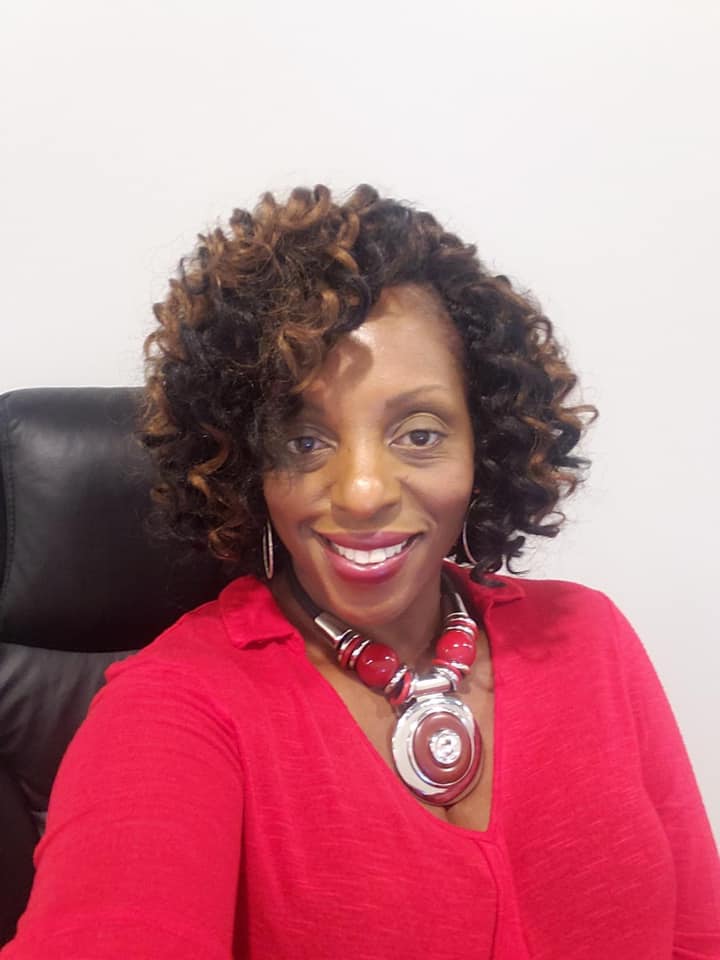
The Oklahoma Eagle Newswire
Q&A with Ronald Stewart Jr. Tulsa Fire Equipment Operation and paramedic
What’s your perception of the overall mood of the first responders?
Speaking on behalf of Tulsa Fire Department the current mood as far in as we are now is pretty optimistic. There was conflicting information early on and the original mood was uncertainty. We have certain protocols in place but this is something new. As information came in and we came to understand what we were dealing with, we started putting things in place to operate. That’s when the mood shifted. It put us more at ease and better equipped and prepared. As a first responder, when you don’t know what you’re dealing with there are thoughts in the back of your mind on how to keep yourself safe and your family safe. When you don’t have a lot of information that can increase the stress. We can respond close to normal when we have information to take precautions to be in service to the community and keep ourselves safe at the same time.
Do you treat every run as though it is a potential Covid case? What is the protocol and how is it different from more normal conditions?
I don’t treat every call as a potential case, but we keep a level of suspicion. Dispatch is good at getting information and relaying information. If there is high suspicion, they let us know ahead of time. We begin to take precautions. However, we can get on the scene and find out that person has symptoms, and we treat it that way. The protocol has changed the level of Personal Protective Equipment (PPE) we wear. Normally we have rubber gloves and eye protection unless the call is (an) airborne (contagion) and we need a mask. With COVID, we not only wear rubber gloves but also a face shield, aprons and sleeves to cover our clothing. Full PPE.
What do you tell family members when they are taking care of a potential positive case in their home?
If they are going through a situation with family members present and we see they are there (in the home) and they haven’t isolated, we encourage them to. We don’t know if it is COVID until they have the test, but if we have suspicions they should keep safe and isolate. That’s not always feasible. It can be difficult, but we have to figure it out as a community because the isolation helps keep the numbers down. We encourage them to take the best precautions for their situation.
When this started and through the process how did it shape your reality? How are you handling the reality that you could be exposed/infected with each new case?
There was a lot of uncertainty, The stress was high. COVID was something that there was all this misinformation on. Was it like the flu? Would it go away? There was a lot of conflicting information. It really did alter our reality. When you are going into something unknown how do you prepare for it? It was a battle between the inner self to protect yourself with the inner drive to serve your community to help a person in need. It not only changed the way we responded, throughout the process it changed our reality at home. There were so many people that were asymptomatic; I could be carrying it home. Now with more information and the more equipped we are, the Fire Department is doing a great job of getting equipment out and we are operating differently because of COVID, however, when we respond it’s a lot less stressful because we have what we need to protect ourselves. That barrier helps.
How did your family take it knowing you were on the frontlines of a pandemic? How do you handle that with them? Are you having to isolate when not on duty?
My wife was concerned. We have three children, so she didn’t like the idea at all. The news can really put your mind into overdrive, so my wife was extremely uneasy. It was one of those times she said “I wish you weren’t a firefighter.” We have two teens and one pre teen and they were concerned. I found myself to be in the position when coming home to comfort them and myself. We try to have conversations on how we deal with it. We find that if we have those conversations it puts them more at ease. Having conversations with them keeps me up to speed too, and I become more well versed in it.
Because their dad is a first responder, they understand better than most.I never thought I would hear my teen say i am ready to go back to school – thank god for the internet and facetime. Their reality has really changed. It is stressful being at home a lot. They get cabin fever and I have to manage those things at home too so it’s like double duty. Because of what I do my children have the advantage of having second hand knowledge coming directly from me. It helps them be more at ease and know why they are not going out. We try to do games and outside activities to break up the monotony.
Your own Mental health – how is it impacting you? What do you do for self care – how are you taking care of yourself/ your mental, physical and spiritual?
I am a spiritual person at heart so I spend time in prayer and meditation, and exercise often. My wife is a fitness instructor so we do aerobic step at home to keep our endorphins going and keep the depression at bay. I take time with family, prayer and meditation and that’s how I get through.
From my point of view it has personally impacted me and my family life.
From a personal aspect my children ask me, “do you feel like you were exposed,” and they are reluctant to hug me immediately. My pre-teen would hug and kiss me after every shift. Now, I have to assure them that I changed my clothes and I have already showered. We have to disinfect the truck and the station after every run. I say you can give me a hug; I’m O.K., but there is a moment of hesitation.
What is (are) the biggest challenge(s) that you do not face under normal conditions?
The biggest challenge you face is the unknown. We know there are people who were asymptomatic that have had the virus. You don’t know if you’re getting accurate information (before arriving) and we need to be very specific in the questions we ask. Nobody wants to be branded a COVID patent. There is a stigma with that. They are not eager to say they have a temperature or difficulty breathing or a nagging, unproductive cough. They are reluctant to give information because they know that triggers a COVID response and they don’t want that attached to them. We question and eliminate the possibility of COVID or we step up our PPE. It’s a new reality. Before we make contact, we try to do as much communication standing outside the home as possible.
If we do enter a home, we politely ask for six feet of distance or sometimes we ask for 10, or ask them to stay in another room while we go through the assessment of the patient just to limit the bodies in the area. As firefighters we all want to go in and help, but because of COVID, I’m the only one who may enter a home before anyone else, and when I have an assessment, I can have another enter. It brings down the exposure. Citizens may see firefighters standing outside of a home and wonder why they aren’t going in but we are doing everyone a favor by limiting the numbers in the home.
What are you learning from this experience that may change the way you respond in the future?
The biggest takeaway is you can never be too safe. Especially as a first responder we can get into the trap of a mindset that a call is routine. A lot of times it is not routine. With some situations it brings back to the forefront that every call is potentially a life and death call. As routine as the call may sound, as mundane as it may sound, we have to have a high level of suspicion there may be a lot more here than the information given to Dispatch. We treat everyone nice and deliver the same level of customer service, but we keep in mind there may be more going on.
What’s the best thing the public can do to help people on the frontlines?
It is safer at home. If you don’t have to get out, stay home. That limits the spread. If it is not a true emergency try to refrain from using 911. Our call volume has increased and we do have callers who contact 911 multiple times in a week. It could be the day it is a true emergency and they need you. If it is not a true emergency those callers are reducing resources available to those who are really in need. When we respond we can’t leave until an ambulance shows up or they are cleared by medical protocol, so we are tied to the patient until the call is completed. In the meantime there may be a call that we are not available for merely because this person has anxiety. If we can limit those number of calls, and there are fewer people on the street and out in public, we will have more resources for true emergencies.
TFD Public Information Officer Andy Little said the best thing for a person who is feeling anxiety but not having COVID symptoms is to call a primary care physician, the Tulsa County Health Department, or the 211 helpline to assess feelings and symptoms










